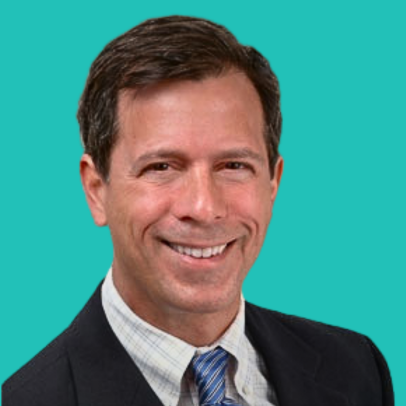
Assembly Bill 890 was signed by California Governor Newsom. The law which went into effect on January 1, 2023, creates two new Nurse Practitioner (NP) categories. The California Association for Nurse Practitioners (CANP) states that the law enables NPs in certain practice settings to start practicing without physician supervision and expand much-needed care. The law, according to the California Board of Registered Nursing (BRN), also provides education, regulatory, training, certification, and medical staff governance requirements for those two categories.
The BRN provides the following list of Frequently Asked Questions and Answers. Our seasoned healthcare compliance lawyers are ready to discuss all your AB 890 questions and review all your federal, California, and local healthcare compliance requirements.
What are the New NP Categories?
AB 890 establishes two new categories called 103 NP and 104 NP. The two new categories don’t “significantly extend or alter the current NP’s scope of practice.” The new NP categories provide additional authority to work without standardized procedures. Please see our prior discussion of nursing and scope of practice requirements for more information. Please see our prior discussion of standard procedures for additional information.
California’s New Scope of Practice Law for Nurse Practitioners – Part One
California passed a new law, effective January 1, 2023, that permits nurse practitioners in specific settings to provide care (under certain conditions) that does not meet “standardized procedures.”
California’s New Scope of Practice Law for Nurse Practitioners – Part Two
California passed a new law, effective January 1, 2023, that permits nurse practitioners in specific settings to provide care (under certain conditions) that does not meet “standardized procedures.”
How Doctors & Nurses Use Standardized Procedures for Medical Spa Compliance
Doctors and nurses and standardized procedures, oh my! Well it doesn’t quite have the same resonance as Dorothy’s chant in Wizard of Oz, but doctors and nurses and standardized procedures really […]
103 NP
This category of nurse practitioner works under the provisions of the Business and Profession Code Section 2837.103. A 103 NP “can work without standardized procedures, in a group setting with at least one physician and surgeon, within the population focus of their National Certification.”
BPC Section 2837.103 provides that in addition to any other authorized practices, an NP who meets the requirements of the statute “may perform the following functions without standardized procedures in accordance with their education and training:”
- Conduct advanced assessments.
- Order, perform, and interpret diagnostic procedures.
- “For radiologic procedures, a nurse practitioner can order diagnostic procedures and utilize the findings or results in treating the patient. A nurse practitioner may perform or interpret clinical laboratory procedures that they are permitted to perform under Section 1206 and under the federal Clinical Laboratory Improvement Act (CLIA).”
- Establish primary and differential diagnoses
- Prescribe, order, administer, dispense, procure, and furnish certain therapeutic measures, including, but not limited to those set forth in the BPC.
- “After performing a physical examination, certify disability pursuant to Section 2708 of the Unemployment Insurance Code.”
- Delegate some tasks to a medical assistant based on other regulations
A 104 NP
A 104 NP works pursuant to Business and Professions Code Section 2837.104. A 104 NP “may work without standardized procedures, outside of a group setting, within the population focus of their National Certification.”
Among other provisions that experienced healthcare lawyers can explain, BCP 2837.104 provides that:
(c) A nurse practitioner authorized to practice pursuant to this section shall comply with all of the following:
“(1) The nurse practitioner, consistent with applicable standards of care, shall not practice beyond the scope of their clinical and professional education and training, including specific areas of concentration and shall only practice within the limits of their knowledge and experience and national certification.”
“(2) The nurse practitioner shall consult and collaborate with other healing arts providers based on the clinical condition of the patient to whom health care is provided. Physician consultation shall be obtained as specified in the individual protocols” and under the circumstances set forth in the statute such as when a patient requests a physician consultation, emergency conditions that require “prompt medical intervention after initial stabilizing care has been started,” and other circumstances.
(3) “Nurse practitioner consultation with a physician and surgeon alone shall not create a physician-patient relationship. The nurse practitioner shall be solely responsible for the services they provide.” [Emphasis added].
(4) “The nurse practitioner shall establish a plan for referral of complex medical cases and emergencies to a physician and surgeon or other appropriate healing arts providers.” The plan should meet additional criteria set forth in the BCP law.
(d) “A nurse practitioner shall verbally inform all new patients in a language understandable to the patient that a nurse practitioner is not a physician and surgeon. For purposes of Spanish language speakers, the nurse practitioner shall use the standardized phrase “’enfermera especializada.’”
Can an NP start practicing independently as an NP immediately in January 2023?
No. An NP who wants to practice “without standardized procedures, must apply to the BRN for a special certification before they can do so.” There is no automatic grant of this authority.
To apply for 104 NP status, a 103 NP must work as “a 103 NP in good standing for at least 3 years prior to becoming a 104 NP.” This means that the earliest the California Board of Registered Nursing can certify 104 NP is 2026.
How do I apply to become a 103 NP?
The BRN has released the new 103 NP application via BreEZe. Eligible NPs can start applying now. The BRN is encouraging all licensees to routinely check their emails to confirm that their application is live.
What are the eligibility requirements to become a 103 NP?
Business and Profession Code Section 2837.103, requires that the NP meet the following requirements to obtain 103 NP status:
- Certification as an NP by the California Board of Registered Nursing.
- Hold[ing] a National Certification in a recognized population focus consistent with 16 CCR 1481 by a national certifying body accredited by the National Commission for Certifying Agencies or the American Board of Nursing Specialties and recognized by the Board.
- Completion of a “transition to practice within the category of your National Certification in California of a minimum of three full-time equivalent years of practice or 4600 hours within 5 years of the date of your application.”
What is a transition to practice?
Business and Professions Code 2837.101 states that “transition to practice refers to additional clinical experience and mentorship provided to prepare a nurse practitioner to practice independently.”
Examples of this additional clinical experience and mentoring include “managing a panel of patients, working in a complex health care setting, interpersonal communication, interpersonal collaboration and team-based care, professionalism, and business management of a practice.”
The clinical and mentorship experience must include either three-full time equivalent years or 4600 hours completed – in California, within five years prior to the date the applicant applies for certification as a 103 NP, after BRN certification as an NP, or if direct patient care meets additional criteria.
How does the Board verify an applicant has completed their transition to practice?
The 103 NP needs to provide proof the NP completed the “transition to practice.” The NP will submit to the BRN information about the provider(s) “who oversaw and provided the mentorship during the transition to practice period.” The BRN will then request that the provider(s) attest to the applicant’s training.
The providers must be competent in the same specialty area or category listed in 16 CCR Section 1481(a) in which the applicant seeks as a 103 NP. The person or entity that attests to the NP’s transition to practice “cannot have a familiar or financial relationship with the applicant and will be attesting to the applicant’s completion of the transition to practice requirement under penalty of perjury.”
Can a 103 NP or 104 NP work in any content area without standardized procedures?
No. An NP applicant can only obtain certification as a “103 NP or 104 NP and practice without standardized procedures in whichever of the six NP categories outlined in 16 CCR 1481(a) that the [NP] received their education and training in, hold a national certification in and completed their transition to practice clinical experience in.”
These six categories are:
- Family/individual across the lifespan
- Adult-gerontology, primary care, or acute care
- Neonatal
- Pediatrics, primary care, or acute care
- Women’s health/gender-related
- Psychiatric-Mental Health across the lifespan
Will the Board certify 103 NPs and 104 NPs in categories other than those outlined in 16 CCR 1481(a)?
“According to Business and Professions Code Section 2837.103(a)(1)(B) and Section 2837.104(b), a 103 or 104 NP must hold a certification from a national certifying body accredited by the National Commission for Certifying Agencies or the American Board of Nursing Specialties and recognized by the Board.”
“NPs who wish to progress to a 103 or 104 can only do so in whichever of the six NP categories outlined in 16 CCR 1481(a) in which they received their national certification in.”
The Board cannot currently grant a 103 or 104 NP status in additional specialty areas such as an Emergency NP or a Dermatology NP.
Can I open an independent practice as a 104 NP?
“Yes. After 2026, when approved by the Board to become a 104NP, a 104 NP can practice without standardized procedures outside of a group setting. However, they cannot practice beyond the scope of their clinical and professional education and training, including specific areas of concentration. A 104 NP can only practice within the limits of their knowledge and experience and national certification.”
BPC 2837.104(c) requires that “a 104 NP conduct a certain level of consultation, collaboration, and referral to other healing arts providers based on the clinical condition of the patient receiving care.”
How can an employer, patient, or any interested party verify whether a licensee has been certified by the Board as a 103 NP or 104 NP?
The authority to practice as a 103 NP or 104 NP will be “displayed along with their RN license status through DCA’s License Search,” an online search tool.
Additional information about Assembly Bill 890 includes the following:
- Overview of Assembly Bill (AB) 890 (ca.gov)
- OPES Occupational Analysis for Nurse Practitioners (AB 890)
- BRN’s Proposed Regulations to Implement AB 890
- Overview of Assembly Bill (AB) 890 – Presentation by Reza Pejuhesh, Board Legal Counsel
California AB -890 authorizes two categories of nurse practitioners who can practice without physician supervision if specific criteria are met. A 103 NP can work in a group setting with at least one physician and surgeon, within the population focus of their National Certification.” A 104 NP may work without standardized procedures, outside of a group setting, within the population focus of their National Certification.” There are specific eligibility and practice requirements for both categories of NP – 103 and 104.
Nurse practitioners should contact Cohen Healthcare Law Group, PC to discuss the eligibility and practice requirements for 103 NP and 104 NP status. Our experienced healthcare attorneys advise nurses and other healthcare professionals about healthcare compliance laws and regulations.

Contact our healthcare law and FDA attorneys for legal advice relevant to your healthcare venture.
Contact Us

